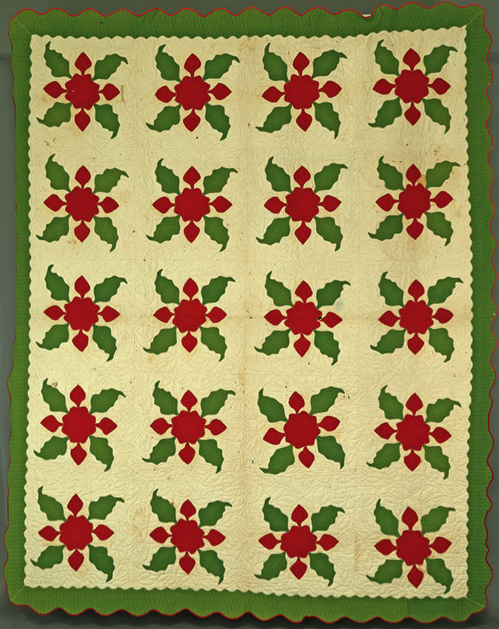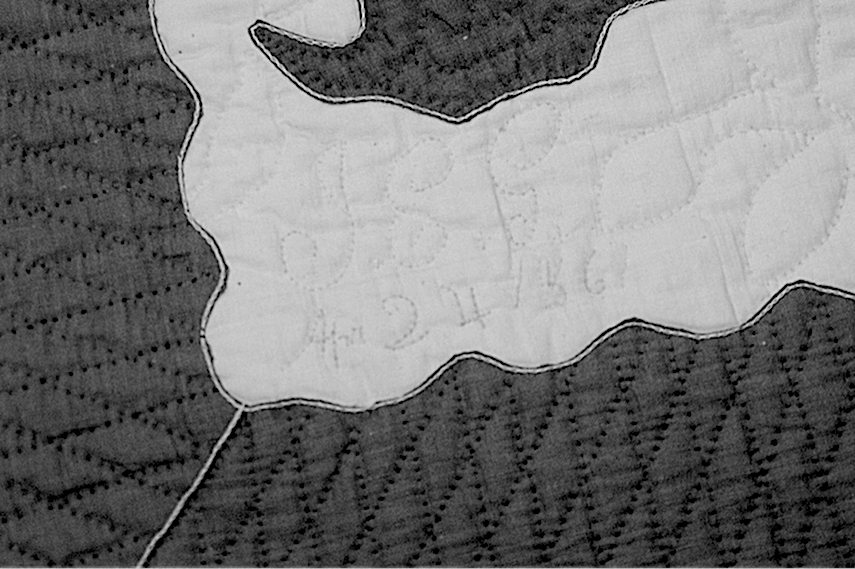
Sewing Machines and Southern Quilts
By Marian Ann J. Montgomery, Ph.D.,
Curator of Clothing and Textiles at the Museum of Texas Tech University
The sewing machine was perfected for home use in the late 1850s. For some time I had thought that the more prosperous industrial north had sewing machines long before the rural agrarian southern homes. However quilt historian Barbara Brackman in her reading of many diaries of Southern women noted that they were using sewing machines before the Civil War in order to help them clothe the many people on their plantations.
Sewing machines were used throughout the South prior to the Civil War because the woman of the household was responsible for the clothing for all those living on the plantation. The earliest machines produced a chain stitch. The lock stitch that we are more familiar with, and regularly use, was invented somewhat later. Seamstresses liked the chain stitch because they could create muslin mockups of the garment and easily remove the stitches for alterations or pattern making. However you had to be careful if you used it for clothing construction as one snip and the whole seam could unravel.
Watch this rather humorous take on how the sewing machine became to be an indespensible home item.
The Rose and Oak Leaf appliqued quilt in the Clothing and Textile Collection of the Museum of Texas Tech University is machine appliqued and bears a date of April 24, 1861 and the initials JEG which were embroidered with white thread along the lower edge. This is a nice example of an early use of the sewing machine in quilting. The quilt was made near Murray, Kentucky by Jane Eliza Gardner, born Nov. 23, 1841 and died April 1919. At the age of 20, Jane married James M. Williams on December 5, 1861. The family tradition says that the hearts in the quilting design indicates it was made as a wedding quilt. Following are detail images of the quilt and the machine applique work.

Rose and Oak Leaf quilt detail of TTUH 1986-045 made by Jane Eliza Gardner donated by her grandson James C. Holland, showing machine chain stitching around applique edges and the initials JEG and the date April 24, 1861. Photo courtesy of the Museum of Texas Tech University.

Rose and Oak Leaf quilt detail of TTUH 1986-045 made by Jane Eliza Gardner donated by her grandson James C. Holland, showing machine chain stitching around applique edges and the initials JEG and the date April 24, 1861. Photo courtesy of the Museum of Texas Tech University.

The date that Jane Eliza Gardner embroidered on her quilt was a huge help in documenting it (Note we have changed the image for the purpose of making the embroidery more easily visible). At first glance the smaller blocks and machine stitching led me to think it was an 1870s piece, but thanks to the embroidered date and further information from the family the 1861 date stands.
After seeing the quilt on exhibit in 2016 a family member contacted the museum to add that Jane Eliza was “raised to sit on a pillow and sew a pretty stitch.” Meaning that she was raised in a wealthy household where she was expected to learn the skills necessary to manage another wealthy household as the lady of the house. With the coming of the Civil War to their area, Eliza and her husband James quickly found that they had to do hard work without the assistance of slaves. They rose to the occasion and survived the hard times building their new life on their own. What a great story is seen through this fine quilt!




.jpg)



RSS feed for comments to this post